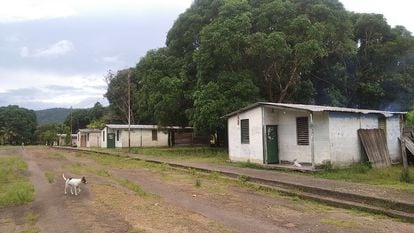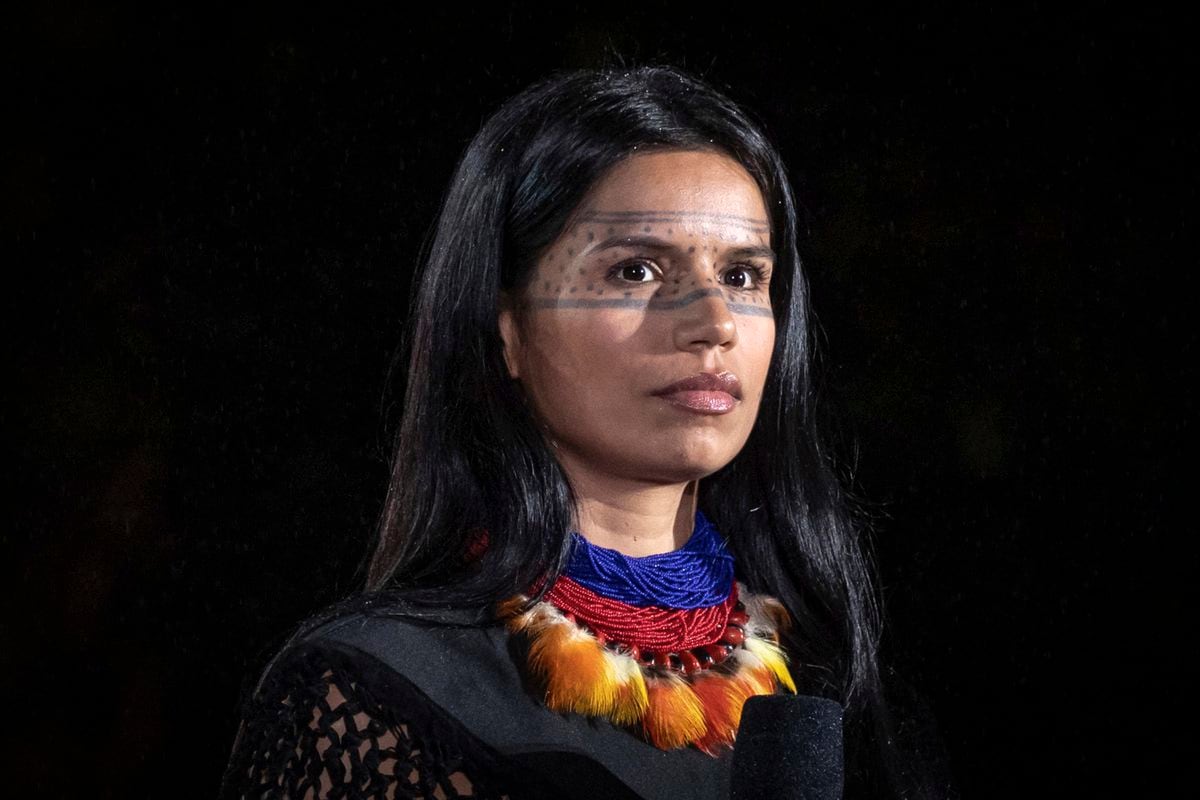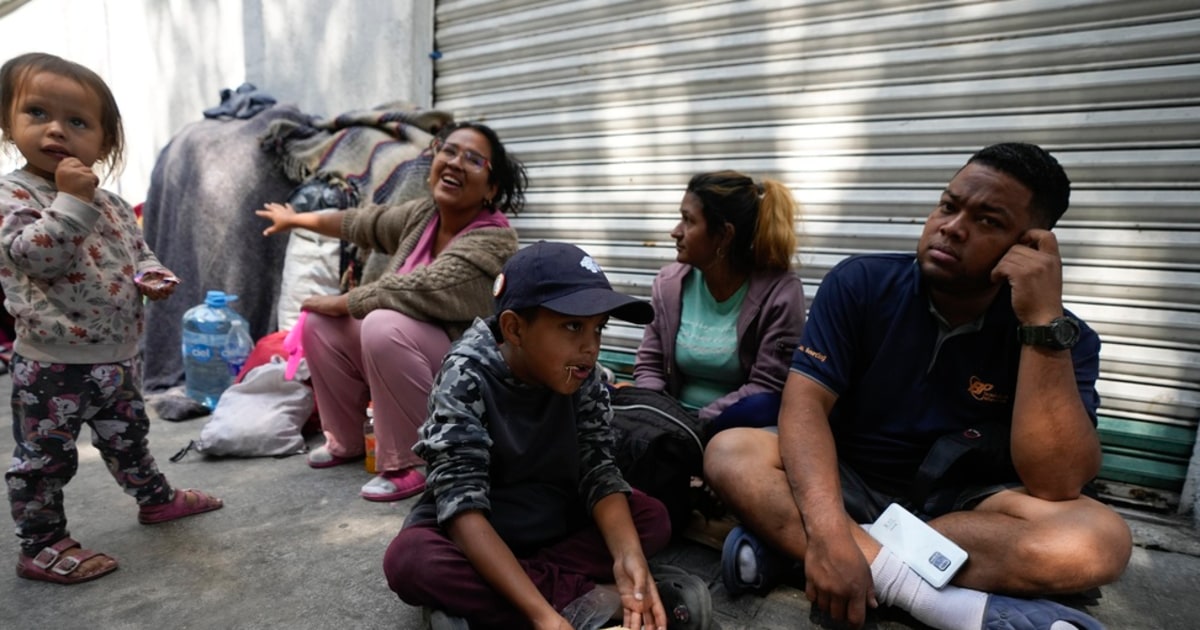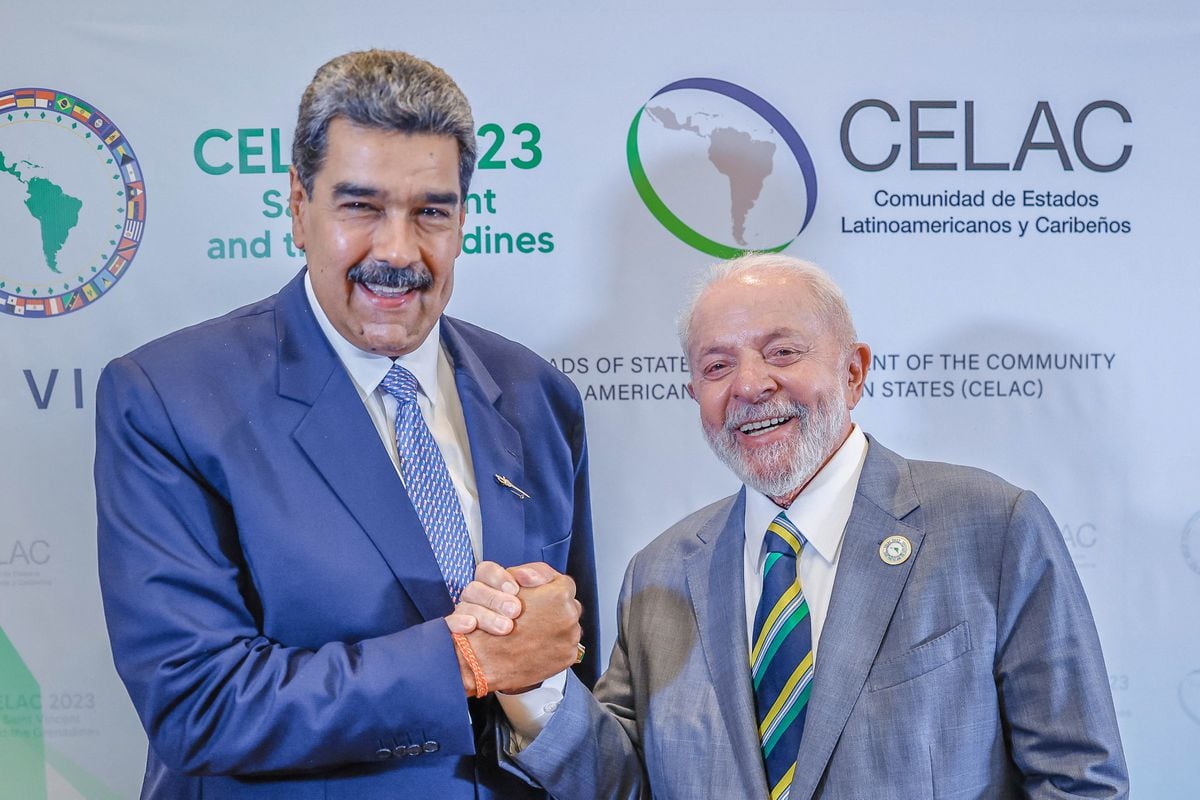The death of a young woman of the Jiwi ethnic group in an attack by the Venezuelan Armed Forces against a camp of the so-called FARC dissidents in the State of Amazonas a year ago, in February 2021, offered a clear indication of two facts: no not only that the Colombian armed groups had moved to the south of Venezuela, but also that they had among their ranks aboriginals recruited at the site.
The operation, precisely called Jiwi by the Venezuelan military command, was part of an unprecedented offensive by Caracas against Colombian guerrillas.
Barely a month later, in March 2021, there was another attack by combined air and ground forces against positions of the Tenth Front of the FARC dissidents —commanded by Miguel Botache, alias Gentil Duarte— near the town of La Victoria, on the north bank of the Arauca River that borders Colombia, in the State of Apure.
The escalation revealed a new element in the tense situation on the southern border of Venezuela, particularly in the regions of Los Llanos and Guayana, where for a long time Chavismo has been indifferent —or willing to coexist— with the increasingly clear presence of Colombian armed groups.
In any case, the military campaign coincided with the news that the internal disputes between the different guerrilla factions for the control of illicit businesses and territories had turned into combat.
And the intervention of the Venezuelan armed forces has been, at best, opaque.
At least three prominent leaders of the FARC dissidents —Jesús Santrich, El Paisa and Romaña— were assassinated in less than a year in Venezuela without Caracas releasing an official version of these episodes.
The February 2021 attack targeted a guerrilla camp on the outskirts of the community of Santo Rosario de Agua Linda, an indigenous community of 300 people about 45 minutes south of Puerto Ayacucho, the capital of Amazonas state.
It was in charge of troops from the Army's 52nd Jungle Infantry Brigade, with around 170 troops.
On the part of the Air Force, the training and tactical attack aircraft Hongdu K-8W Karakorum acquired from China in 2010 had their baptism of fire.
Commanders of the Comprehensive Defense Operational Zone #31, present weapons seized in Operation Jiwi, on February 11, 2021, in Apure, Venezuela.ZODI APURE
According to the military report, six people from the camp died in the assault, including the young Jiwi from the Coromoto community, located on the southern highway axis of the state, a road that leads to the port of Samariapo, a starting point for transportation. river to the interior of the Amazon.
According to official information, the indigenous girl had joined the insurgent ranks.
The transformation of the area, usually a point of tourist interest, into a theater of war operations, has been the culmination of a process that began in 2016.
NG, a resident of the neighboring community of Botellón de Agua Linda, remembers the day of the attack well.
It was a Sunday at ten in the morning, in the midst of a religious ceremony in the communal hall.
First the plane was heard flying over, "then came the shots and an explosion," he recounts.
The bombardment lasted for three days.
Emiliano Mariño is the captain or cacique of Santo Rosario, the community affected by the military operation.
The local economy depends on the production of casabe and mañoco, two traditional preparations of yucca.
His countrymen are Jiwi, a people also known by the Creoles as Guahibos, whose domains extend from Los Llanos in eastern Colombia to the right bank of the Orinoco in Venezuela.
Leaning on the stove, while removing the grains of the fiber that is extracted from the bitter yucca to turn it into flour, Mariño says that the guerrillas arrived in 2016, set up a large camp on the slopes of the mountain and stayed there for five years.
The guerrillas identified themselves as members of the FARC to the inhabitants of Santo Rosario. Sergio González
"At first we saw men dressed as soldiers walking through the streets of the mountain community, but we assumed that they were Venezuelan soldiers," he says.
The confusion sounds plausible: just four kilometers from the indigenous settlement, on the main road that connects with Puerto Ayacucho, there is a command of the Bolivarian National Guard.
One day, Mariño says, a uniformed man who identified himself as a member of the FARC came to his house.
“He told us that they needed to remain hidden in the jungle because their government was persecuting them to kill them, that their presence was not going to alter the dynamics of the community and that, on the contrary, they wanted to support us with security and that we could trust that they would not they were going to interfere with or abuse the women, not even with the conucos”, referring to the peasants' survival plots.
And indeed: five years of peaceful coexistence passed, only interrupted by the bombs.
Youth enlistment
The forced recruitment of minors and indigenous people is not news in the context of Colombia's internal war.
But in Venezuela nothing similar had been recognized.
Up to now.
“Here there are kids up to fifteen years old who have gone to work with the guerrillas,” says AQ, a 23-year-old mother who works in a business located on the banks of the Orinoco River, at the barge crossing that connects Puerto Nuevo — sector of the municipality of Atures, also known as El Burro—with Puerto Páez, in the State of Apure.
Fish vendors wait on the banks of the Orinoco River in the Amazonian city of Puerto Ayacucho, Venezuela. FERNANDO LLANO (AP)
Along with his mother, AQ runs a business that was dedicated to the sale of groceries and food, but due to the increase in the price of subsidized gasoline in Venezuela and the failures in the supply in the states in the south of the country, it had to mutate. to the clandestine sale of gasoline from Colombia.
An activity that has become a source of livelihood for many in the entity.
“Most of the businesses in El Burro work with contraband gasoline.
The buses that come from Ciudad Bolívar and Caicara pass through there loaded with bachaquero vendors who cross to Puerto Carreño to buy wholesale Colombian merchandise to later sell it in Venezuela.
Three buses arrived yesterday,” he detailed.
The young mother assures that in that passage from Los Llanos to the State of Amazonas “everyone knows who is who.
We all know who the people of the bush are,” she notes, referring to the guerrillas.
“They deal with one, with normal people, they don't ask us for a vaccine [or extortive payment of protection].
They in their world.
But they do help.
For example, if a woman has a sick child and turns to them, they offer her financial support.”
One of her sisters is 16 years old and pregnant by a Venezuelan boy who joined the ranks of the guerrilla, she says.
And a childhood friend also works for them.
In Amazonas, the Colombian irregular forces control the illegal businesses that prosper in four of the seven municipalities of the State.Sergio González
“My friend was taken to Cabruta [a town located on the north bank of the Orinoco, in the state of Guárico] There, the women do the same as the men: they carry weapons, stand guard, wash, cook.
I would not do it.
It's easy to get into that, but it's hard to get out."
“The war came for me”
Her mother went to look for ML at the guerrilla camp.
She asked to speak to the commander in chief to demand that her daughter return to the community.
It was not easy, said ER, one of the young woman's teachers, but her mother planted herself in the camp determined not to leave the place without her daughter.
She got it.
Along with the young woman killed in the bombing and a third companion, ML was one of three indigenous women from the Coromoto community who chose to join the guerrillas.
ER, who taught him, is a teacher from a neighboring community called Rueda.
ER relates that he asked ML why he had taken the risk of going with the guerrillas.
The answer that was recorded in her memory does not seem to surprise her: "I thought that working for them could help my family, we are in great need," the teacher recalls that the girl told her.
Poverty and the presence of irregular groups in their territories is pushing indigenous people to migrate to Colombia.Sergio González
A socioeconomic survey applied by the Delegation of the Network of Indigenous Defenders in that community of Rueda, as well as in another nearby village, Platanillal (almost five kilometers west of Coromoto, ML's residence), revealed that 80 of the 286 people who participated in the study had some level of malnutrition.
AS, a Jiwi indigenous person who lives in Platanillal and is part of the Defenders Network, explains that the absence of the State and the humanitarian crisis plaguing the country are the main causes of the dramatic situation that indigenous communities are experiencing.
And they cannot meet their needs even with traditional hunting and fishing because the presence of irregular groups in their territory has prevented them from accessing them.
“The indigenous people don't want to go to the conuco to fish because on the way they meet the guerrillas, they are afraid.
The CLAP bag arrives, hopefully, every two months”, explains AS in reference to the government program for the distribution of food and products from the basic basket at subsidized prices.
A report presented by the Amazon Research Group (Griam), in April 2021, warns of the massive displacement of indigenous populations from Venezuela to Colombia.
The indigenous migrate mainly to the border departments of Vichada and Guainía.
“Of the 34 communities on the southern road axis, six were completely abandoned, all of them left,” details AS
“From the communities of Rueda, Coromoto, Platanillal and Brisas del Mar, we know that 350 indigenous people migrated to Puerto Carreño, and 400 to Cumaribo [populations on the Colombian side].
Only between October and November 2020, an estimated 200 indigenous people, young people and adults, have left the State by river”, explains the indigenous defender.
Sitting in a tiny office, Michelle Beath Zurfluh, secretary of the office of the Governor of Vichada, acknowledges that the entity faces a problem with the migration of indigenous people from Venezuela.
She explains that the Jiwi are now completing a second exodus, as many had crossed the Orinoco years before to Venezuela.
Now, conversely, the children and grandchildren of those migrants are returning to Colombia.
There they occupy settlements with precarious houses made of zinc sheets, plastic and cloth that do not have any type of public service.
According to data compiled by Griam, produced by the Secretary of Social Development and Indigenous Affairs of the Government of Vichada, there are 25 Jiwi settlements in the capital of that Colombian department.
The children of the guerrilla
Since the National Liberation Army (ELN) set up three camps in 2017 near Betania Topocho, a community inhabited by 1,200 Piaroa indigenous people north of Puerto Ayacucho, things have begun to change in unexpected ways.
The ELN arrived in the Betania Topocho indigenous community in 2017, where they set up three camps just five kilometers away. Sergio González
Over time, outsiders blended into the community.
They recruited indigenous youth for menial jobs.
Between one thing and another, while building relationships with the local boys, they began to meet single girls in the community.
"Little by little, the young people began to speak like the guerrillas, they expressed themselves and behaved like the guerrillas," says JS, a resident.
Voluntarily, some joined their armies: "They were seen wearing the uniform and on many occasions they were armed."
The link between the guerrillas and the youth of the community took on another dimension, and began to normalize to a certain extent, with the birth of the first children resulting from relationships between irregular combatants and the Piaroa women of Betania.
According to testimonies of the locals, at least seven children of members of the ELN make up the community today.
On one occasion a uniformed man was seen lining up in a special operation taken to the community by the Mayor's Office of the Venezuelan municipality of Atures to register the identity of a son.
Aerial view of the forest near Puerto Ayacucho, Amazonas State, Venezuela. DEA / P. JACCOD (De Agostini via Getty Images)
Divided into two poles —that of those who support the presence of the irregulars and even work for them, against those who reject it outright—, in Betania Topocho there are already several community debates that have taken place to weigh and mitigate the impact that is being having the newly arrived neighbors over their traditional ways of life.
In August 2021, such a situation occurred.
Then a girl from the community was identified who served as an intermediary to organize love dates and intimate encounters between insurgents and Piaroa girls.
The assembly unsuccessfully demanded that the guerrillas stay in their camps and not set foot in the village again.
For JS, the precariousness of daily life is only the mental base on which the guerrilla finds sustenance to seduce the young people of the community.
“They lend them their weapons, their hats, they talk to them about a new life full of adventures, money and power.
They take advantage of the immaturity of minors, ”he laments.
The Conflict Responses Foundation (Core) assures that the simplistic narratives according to which these groups are only made up of those who did not leave their arms in Colombia do not reflect reality.
In his report
The Faces of Dissent: Five Years of Uncertainty and Evolution
, published in March 2021, Core states that dissident groups have been largely fueled by new recruits.
This would be true on both sides of the Colombian-Venezuelan border.
Venezuelan federal agents stand guard as five men accused of being members of Colombian paramilitaries are shown to the press in Puerto Ayacucho, in April 2005. LESLIE MAZOCH (AP)
In the Ombudsman of the State of Amazonas there is a formal complaint for the recruitment of seven indigenous people by members of the FARC in the Municipality of Maroa, in the southwest of the state.
In the complaint, they point out as responsible for the alleged slavery and extortion "illegal foreign miners and Colombian armed groups outside the law (FARC deserters), who exercise total control of the Siapa River mining area."
Relatives of the seven young people said that they "were taken with false promises and are not allowed to leave the mining areas," according to the document, registered in March 2021 in the city of Puerto Ayacucho.
The relatives went to the military posts, but received no support, says the complaint.
They therefore had to go to the guerrilla camp and request that the adolescents be released, without receiving a response.
“We presume that these adolescents were recruited to work in mining areas.
It is a case in which we are just beginning the investigations by the Ombudsman's Office," explained Gumercindo Castro, head of the Ombudsman's Office in the State of Amazonas, at the time of the complaint.
(*)
This is the fourth installment of a series investigated and published simultaneously by
Armando.info
and
El País , in conjunction with the support of the
Pulitzer Center
's Tropical Forest Research Network
and the Norwegian organization
EarthRise Media
.
(**)
In this report, testimonies are cited from personal sources whose names are transcribed only as initials, even if they did not explicitly request the confidentiality of their names.
The
Armando.info newsroom
decided to do so in order to avoid possible retaliation by the armed groups against these sources.
When the names are not presented in this way, they are sources that were already identified in previous publications.
Subscribe here to the EL PAÍS América newsletter and receive all the key information on current affairs in the region.


/cloudfront-eu-central-1.images.arcpublishing.com/prisa/5BXUKKEUHRB45CXJXXPGMWBHYM.jpg)
/cloudfront-eu-central-1.images.arcpublishing.com/prisa/ZP4NWHUN7JACK2UZSAHGHFED3E.jpg)


/cloudfront-eu-central-1.images.arcpublishing.com/prisa/DNL7HO6Q7JEGXAADDZOU7HVF2I.jpg)


